I have a few coins here in front of me. At first glance, you might assume they are all versions of the same thing. They all are silver colored, roughly 18mm in diameter, and about 1.2 mm thick. They all weigh roughly the same too, around 2.5 g.
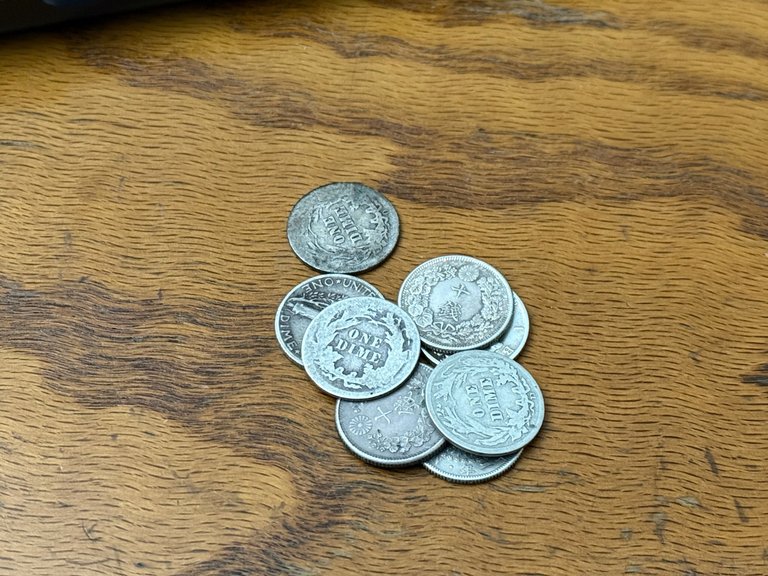
Look closer and you may start to see some differences.
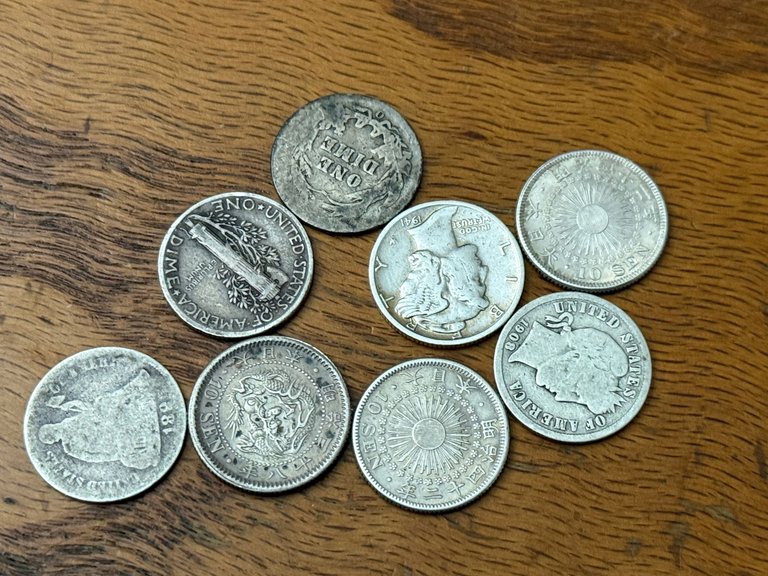
They are US dimes and Japanese 10 sen coins. Among the dimes you'll find the seated Liberty, the Barber designed right-facing Liberty, and the Weinman designed left-facing Liberty wearing a hat with wings. Among the sen coins, the only major difference you will notice is two of them have a sunburst and one has a dragon.
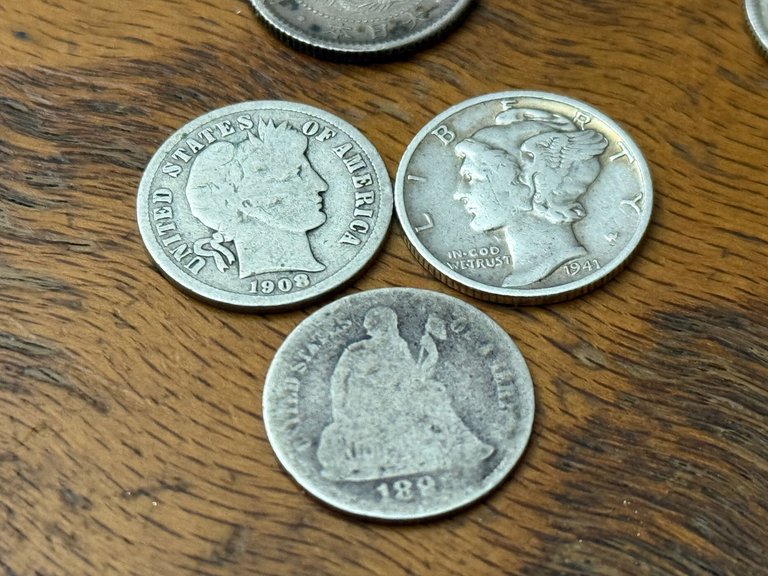
The US dimes all have 90% silver and are the same diameter/weight/thickness, making them worth around $2.25 just based on melt value. The Japan sen vary a bit, with the dragon one being 80% silver and slightly bigger than the other sen, giving it a melt value of roughly $2.10, while the other sen are 72% silver with a melt value of about $1.60. With the exception of the Mercury dimes, which I don't think are special years, they all go for more than melt value just because collectors want them. Especially the dragon sen, which might go for around $10 for a dirty copy like this, but above $100 for a cleaner one.
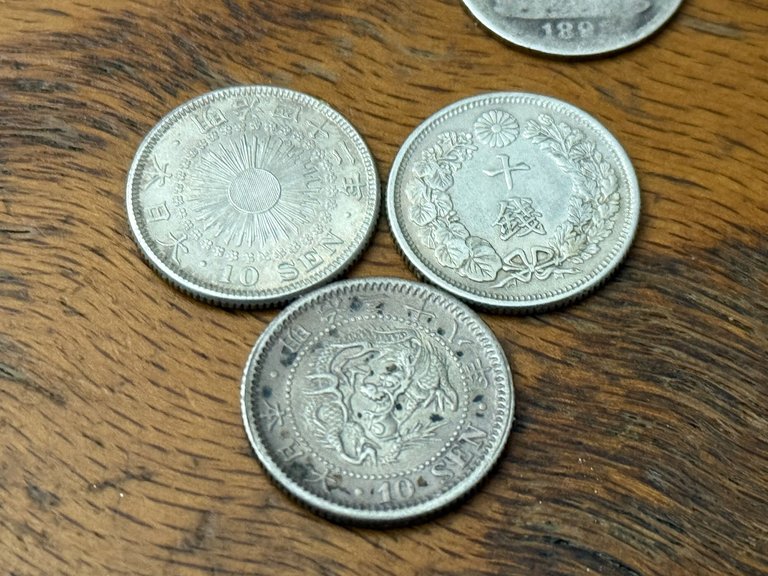
At one time, these were all equal in value. Before the hyperinflation of WWII, the sen was equal to the cent, making these dimes and 10 sen coins the same. And they are roughly still the same due to the silver inside—two of them a bit less, but I did say roughly.
I don't think it would be too controversial to say that the Mercury dime is probably the best looking of all of these. The Barber dime image is nice and classical, albeit kind of boring, and the dragon 10 sen is... well, it's a dragon! But the beauty of that Mercury dime design is hard to overstate.
Unlike some bigger silver coins, these wouldn't make good carry pieces. They are too small and might easily slip out of your pocket when you aren't looking. While that's not a huge amount of silver to lose, it would be a bummer just the same. That in mind, these live in my silver drawer and only come out when I want to admire them or take photos.

The oldest in the pile is the dragon sen, dating to 1870. The seated liberty is the second oldest, dating to 1891. Let's use that date. 10 cents or 10 sen in 1891 would be about $3.47 today when adjusted for inflation. But as Michael Saylor is fond of saying, inflation is a vector, not a single value, and so the numbers given by these simple inflation calculators on the internet usually underestimate the actual buying power. The actual buying power was likely much greater for these coins. That 10 cents represented a much higher percentage of the average workers pay at that time and as a result you cold buy much more if you shopped carefully. This was certainly true of Japan, where the buying power was much higher.
I should buy more of these. Bigger coins are expensive, but these smaller ones can usually be had for no more than a few bucks and the history is just as interesting as the bigger ones.

What one is your favorite?
❦
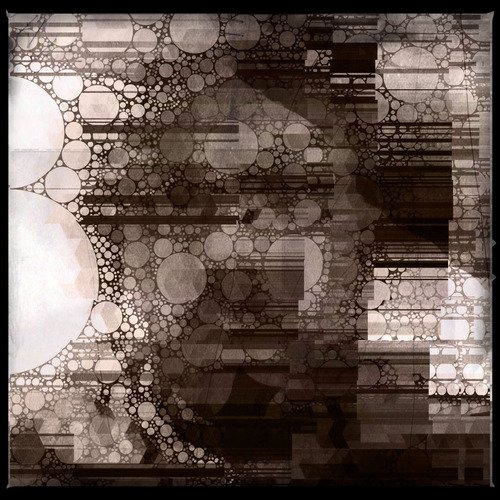 |
David is an American teacher and translator lost in Japan, trying to capture the beauty of this country one photo at a time and searching for the perfect haiku. He blogs here and at laspina.org. Write him on Twitter or Mastodon. |

